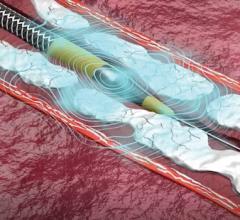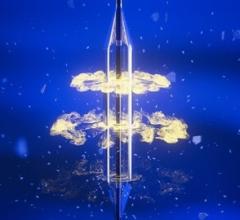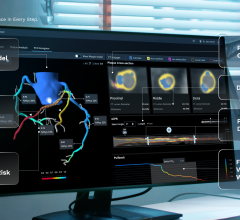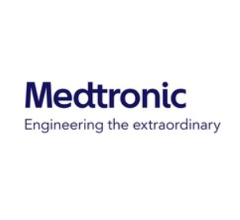
The balloon inflation to deploy an Edwards Lifesciences Sapien 3 TAVR valve in a failed surgical tricuspid valve. This valve-in-valve (VIV) procedures was performed at Beaumont in a 34-year-old female patient who was determined to be too high of a surgical risk for a second surgical valve replacement.
June 29, 2021 – Cardiologists at Beaumont Health successfully replaced a 34-year-old woman’s tricuspid valve in a rare transcatheter valve-in-valve procedure using a Sapien 3 transcatheter aortic valve.
“Our experienced structural heart teams at Beaumont Health can step in where others cannot – to save lives or improve the quality of patient’s lives,” said Beaumont interventional cardiologist Joseph Chattahi, M.D., director of the Structural Heart Disease Program at Beaumont Hospital, Dearborn, and a leading expert in catheter-based valve and other cardiac procedures in the region. “It’s a game-changer for our patients.”
Led by Chattahi, the Beaumont Heart Valve Clinic team at Beaumont Hospital, Dearborn, performed the successful procedure on May 4. The patient went home the next day.
Chattahi said the procedure was the patient’s best hope for survival. In 2017, Beaumont Dearborn cardiothoracic surgeon Timothy L. Sell, M.D., replaced the patient’s malfunctioning native tricuspid valve in a successful open-heart surgery. But two years later, a bacterial infection damaged the bioprosthetic valve – a porcine, or pig, biological valve on a metal ring - that was used to replace the native valve. As a result, the patient became very sick starting in 2019 with extreme fatigue, shortness of breath and swelling in her abdomen from the pooling of fluid. She also was at risk of damage to her liver from the potential of fluid backing up into the vessels leading to the vital organ.
“She needed help badly,” said Chattahi. “She was getting progressively worse. It’s not uncommon for doctors to say that nothing else can be done for people with advanced tricuspid valve disease. It can be a difficult valve to access safely, so issues with the tricuspid valve should be treated by very experienced teams.”
The patient was initially evaluated for another open-heart surgery by Sell. But due to the prior surgery, resulting scar tissue and her clinical condition, another open-heart procedure would be risky.
Chattahi and Sell reviewed her case with other members of the Multidisciplinary Structural Heart Team at Beaumont Hospital, Dearborn, including Samir Dabbous, M.D., director of the cardiac catheterization lab at Beaumont, Dearborn; interventional cardiologist Rita Coram, M.D.; cardiac surgeons Reza Dabir, M.D., and Baron Hamman, M.D.; cardiac imaging specialist Paolo Marciano, M.D., and other experts in catheter-based procedures.
Together, they determined that a novel, catheter-based approach would be the safest method for replacing her malfunctioning tricuspid valve. The patient was relieved to hear that her heart could be repaired without having to reopen her chest, so she made the decision to move ahead with the procedure by doctors Chattahi, Coram and Sell.
“We are fortunate to have both surgical and catheter-based approaches for patients with advanced cardiac conditions, and we rely on a team approach to determine which option is safest for each patient,” Sell explained. “It is our privilege to work with doctors throughout Beaumont Health and referring physicians across Michigan to provide expert cardiac care and ongoing follow-up with each patient’s own cardiologist. Working together helps us best serve our patients.”
Planning for the rare procedure began with high-resolution CT scans and 3-D transesophageal echocardiography (TEE). With TEE, cardiac imaging specialists use a small ultrasound probe inserted into the patient’s esophagus to take pictures of the tricuspid valve prior to the procedure. The structural heart cardiologists then use the CT and TEE images to choose a properly sized valve for the patient’s anatomy.
The procedure took about 40 minutes. A catheter was inserted into a small incision near the patient’s upper thigh and groin area, and was guided through a vessel that travels up the body into the patient’s heart.
The team then inflated a balloon inside the old valve, stretching the diseased leaflets to create more room for the new valve. The Beaumont team then deployed the new valve, a balloon-expandable Edwards Lifescineces Sapien 3 TAVR valve, inside the old valve, which anchors it in place.
“She told us the next day she felt like a new person,” Chattahi said. “We’re so glad she’s feeling better.”
For more information: www.Beaumont.org/valveclinic


 November 14, 2025
November 14, 2025 









